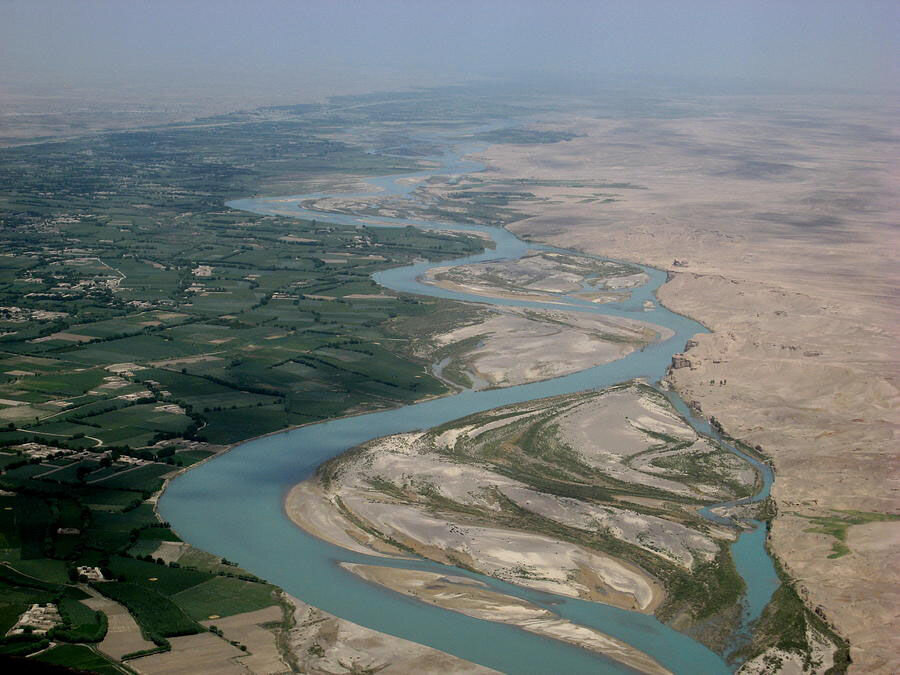In the southern city of Kandahar, after long years of bloody war, a royal proclamation forbade the taking of life from humans, and all other animals as well.
“. . . hunters and fishermen have given up hunting. And those who were intemperate have put a stop to their intemperance according to their ability and [become] obedient to their father and mother and elders, unlike the past. And in the future, they will live better and more happily, by acting in this manner at all times.”
Inscribed in Greek and Aramaic on a rock in Kandahar in 260 B.C.E., the imperial edict was broadcast as far as north Africa and the eastern Mediterranean.
The singular peace may have lasted until the death of its author, the emperor Ashoka, in 232 B.C.E. The Kandahar Edicts–thirteen or fourteen in all–were still legible when found in the 20th century. A cast of the peace proclamation is in the Kabul museum in the unlikely event that you are planning a trip to Afghanistan.
In another familiar scene of recent imperial devastation, in southern Iraq, excavation has begun on the site of a 4,000 year-old city in the middle of a desert known as the “Fertile Crescent,” which sustained ancient Mesopotamian civilizations.
The Tigris and Euphrates were the first rivers used for large-scale irrigation, beginning about 7500 years ago. The first water war was also recorded here, when the king of Umma cut the banks of irrigation canals alongside the Euphrates dug by his neighbor, the king of Girsu.
In recent years,Turkey’s damming of the Euphrates threatens parts of Syria and drought-parched Iraq. International conferences have been convened to deal with the crisis, to increase release of dammed water to flow downstream.
California, where I live, is normally dry and now, besieged by climate change, with persistent drought and rampant wildfires. Farmers and agronomists are testing drought-resistant strains of olives, vines, almonds and pistachios from the Middle East. California’s own fertile delta has always been heavily dependent on declining snow runoff from the Sacramento and San Joaquin rivers, and on government subsidies.
Dams and water supply are a flammable issue everywhere, in California as well as the Middle East. In Syria, drought was recognized late as a major cause of their ongoing civil war. Bashar al Assad might have maintained a precarious and even ecumenical peace, but drought in 2006-9 brought crop failures and hordes of youth without work.

In October 2010 I was traveling through the Syrian desert, passing through Palmyra’s storied ruins, toward the eastern border with Iraq. At the town of Deir Ezzor the suspension bridge leading across the Euphrates to Iraq was lined with youths on display, evidently selling themselves. Farther down the Euphrates, we visited the ancient sites of Dura Europus and Mari. In the course of the war, they were looted, and the suspension bridge, built by another imperial power, in this case the French, was destroyed by Assad’s army.

Back to Afghanistan, where the latest atrocity in the U.S. withdrawal involved a poorly judged drone attack which killed ten members of the family of an Afghan aid worker. Seven were children. There were no U.S. casualties, and President Biden has assured us that U.S. troop withdrawal is being replaced by “over the horizon” warfare–of which that drone attack is only one sample.

Breaking news which may not outlive one or two news cycles: U.S. forces evacuating Afghanistan are not going home; they are shipping out to Iraq.Meanwhile, massive mosque bombings in Kunduz and Kandahar continue, even without western intervention, the sectarian violence of Sunni against Shiites. But also without western intervention, Afghanistan and Iran have finally reached an agreement on the water rights for the Helmand River.
Amid the long rotations of civilization and destruction in Kandahar, there was that one early ruler who called for an end to all killing. Ashoka was surely less benign than the Kandahar Edict suggests. Yet after a violent close to the latest imperial occupation of Afghanistan, the ancient king’s vision of peace seems restorative. And somehow the ancient rivers still curve through the dunes and the fields, and humans still struggle for the land and for a share of the life-giving waters.


I do so enjoy the meanderings of your mind, which are not meanderings at all, but quite goal-directed. And what a journey across time and space, bringing it all home. Where is Ashoka when the world needs him? And, yes, the rivers and the people do their things, as always. Thank you for this.
LikeLike
good one.
On Mon, Oct 25, 2021 at 4:30 PM frances smith starn wrote:
> Frances Smith Starn posted: ” Helmand River between Afghanistan and Iran > In the southern city of Kandahar, after long years of bloody war, a royal > proclamation forbade the taking of life from humans, and all other animals > as well. “. . . hunters and fishermen have g” >
LikeLike
Nice! But hasnât there been some rain in Norcal? xox
LikeLike
We are still admonished that the drought is not over : (
LikeLike